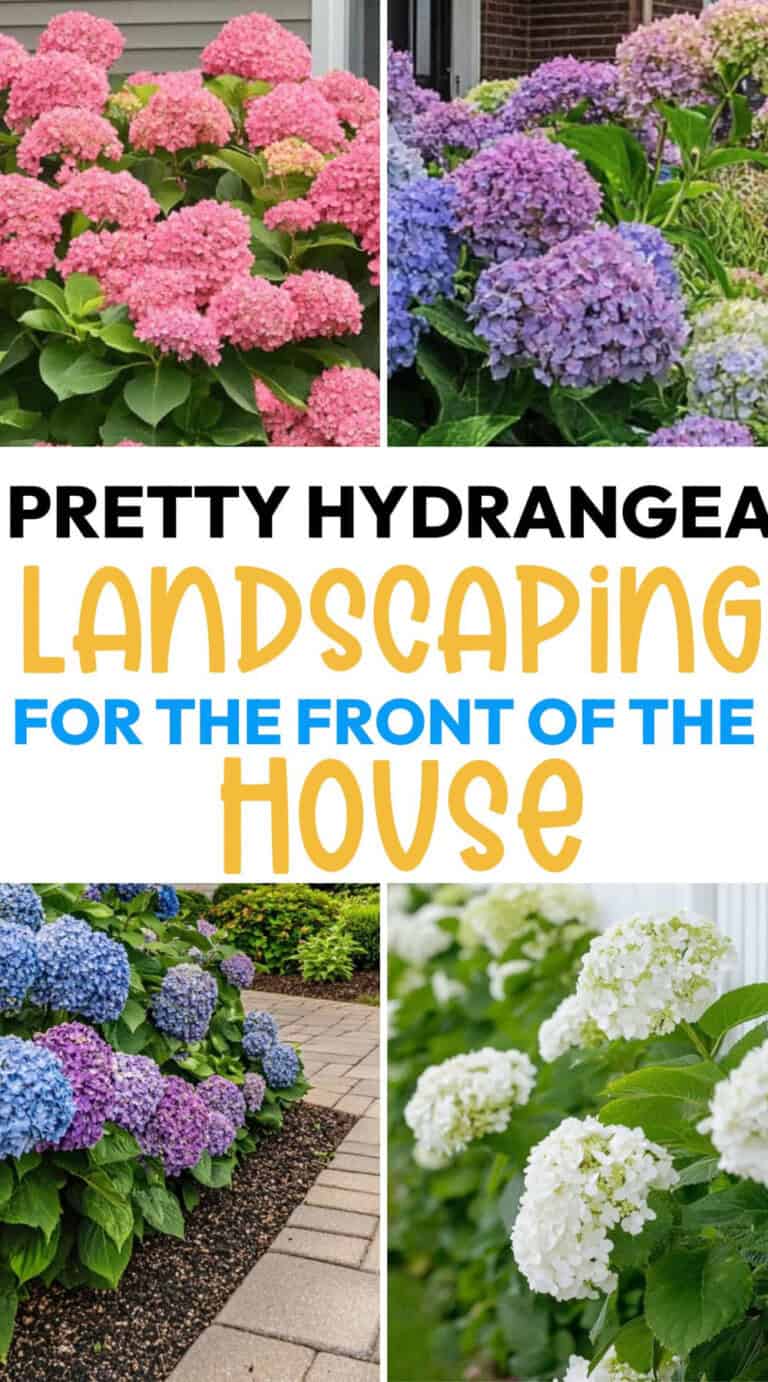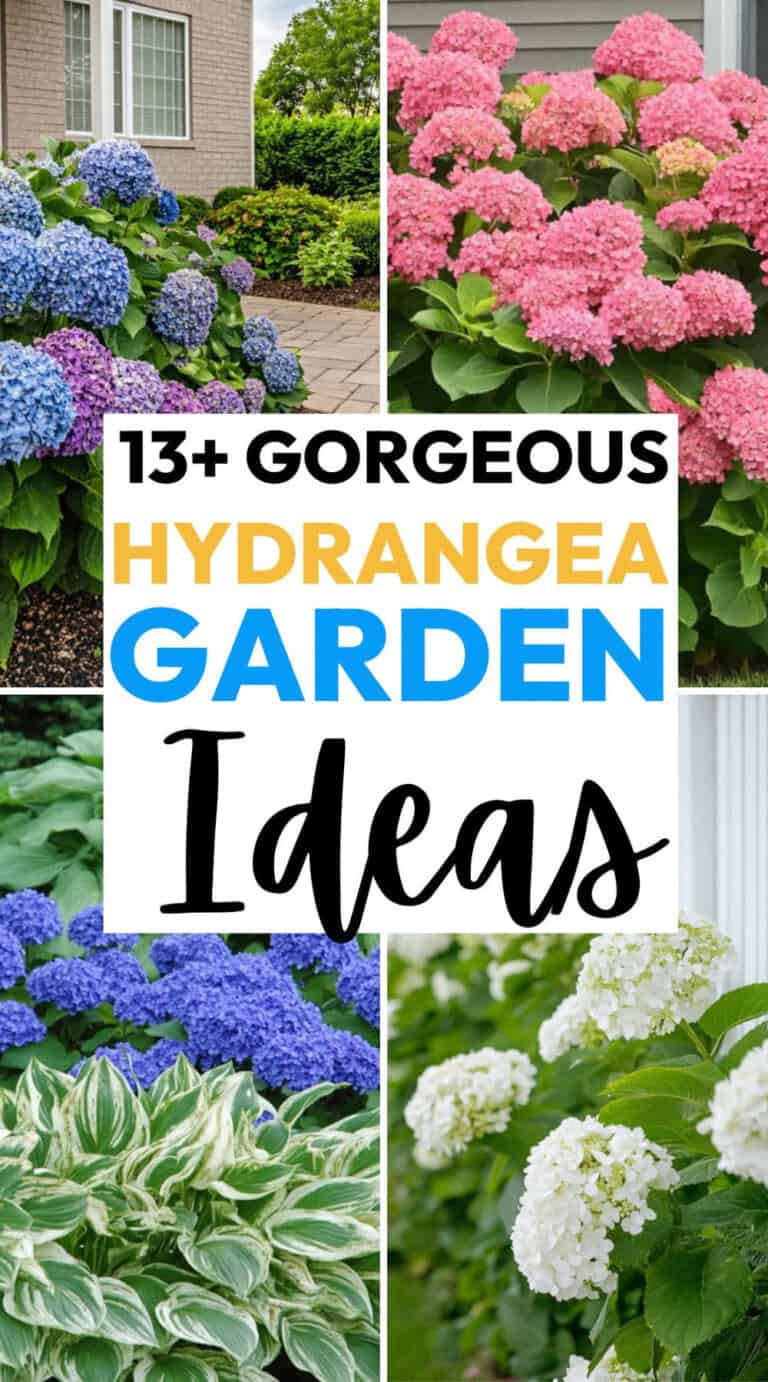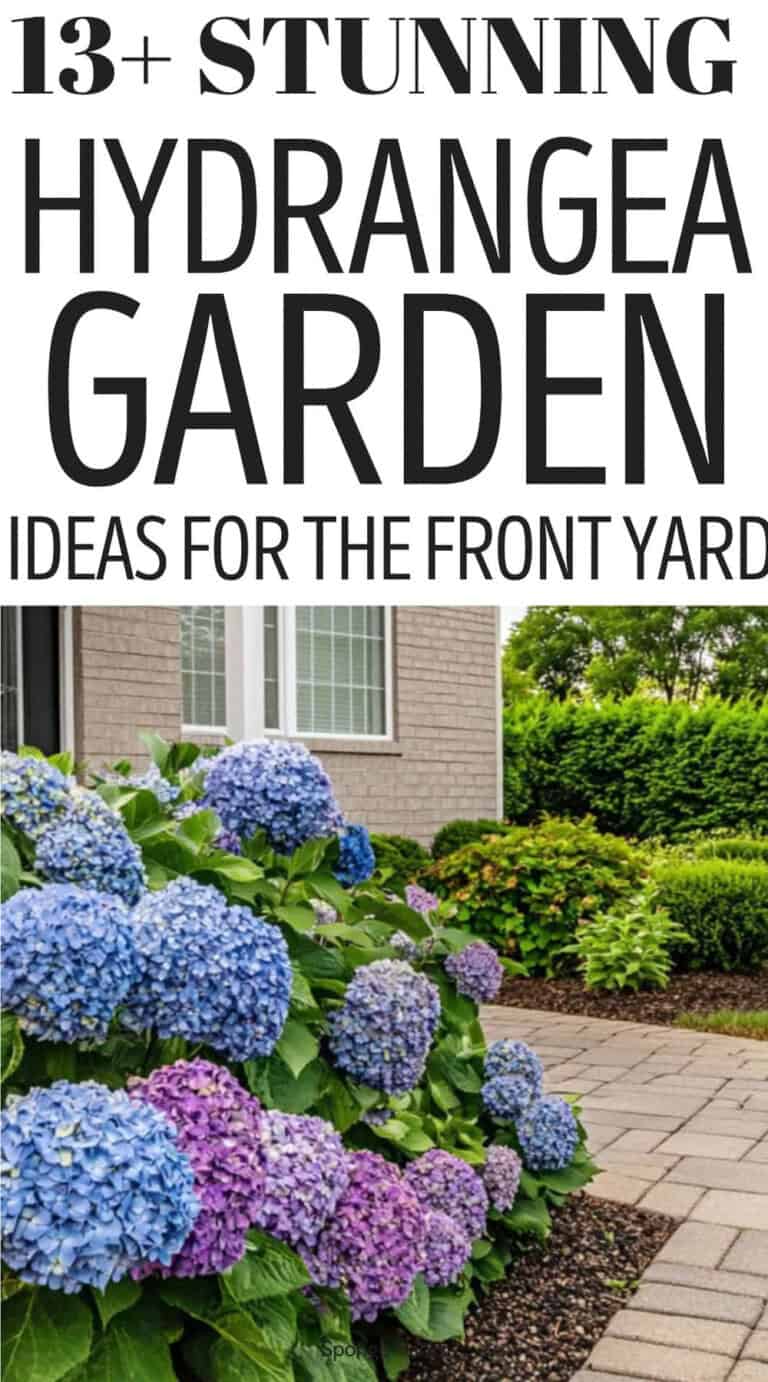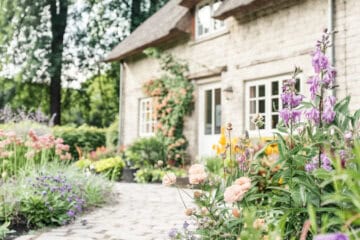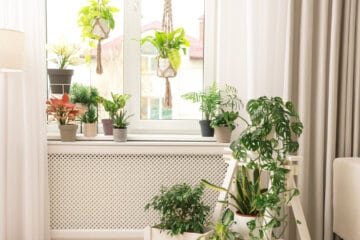Hydrangeas are big, bold blooms that are easy to grow and easy to show off!
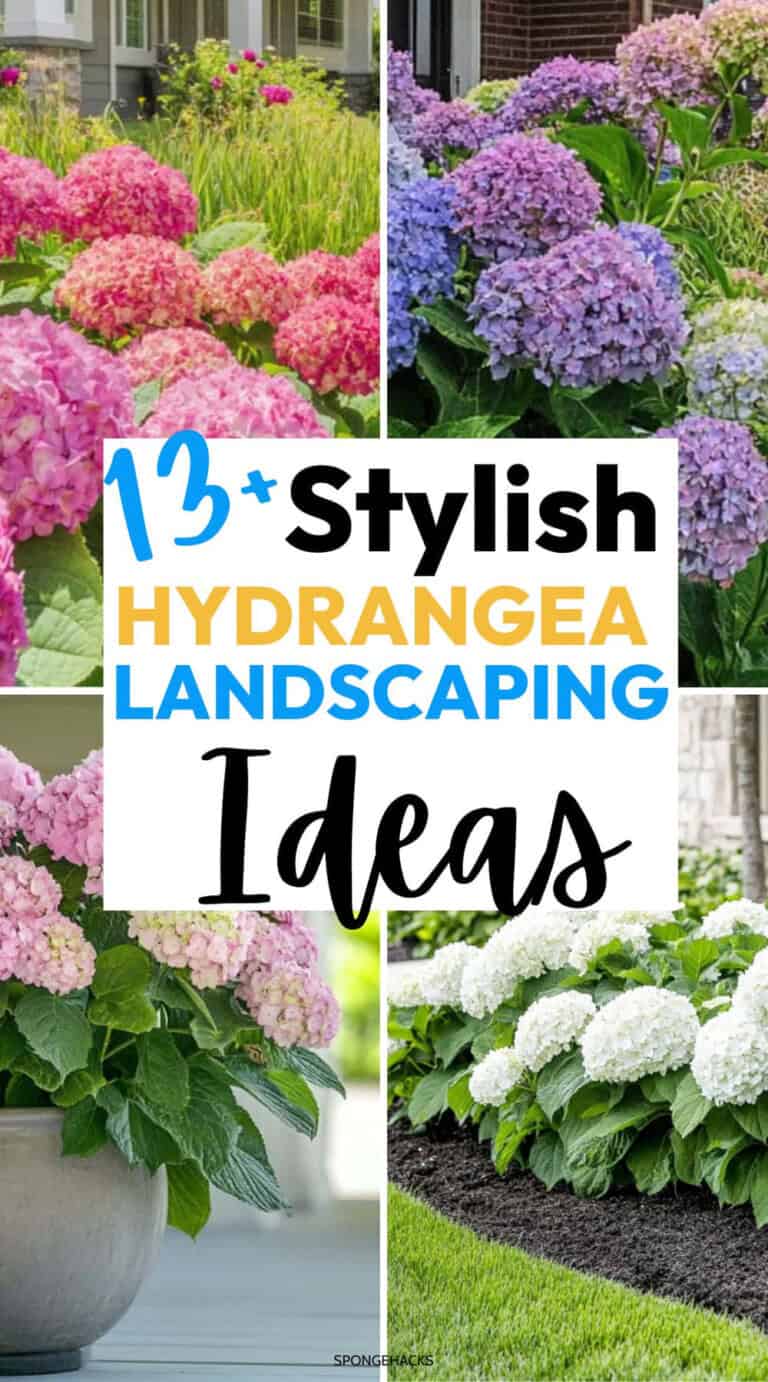
They can be planted around fences and tucked into corneres, or you can let them take over your flower beds for an eye-catching look.
I find when I’m driving around my neighborhood, I can’t help slow down and stare at hydrangeas.
They’re so beautiful!
If you’re looking to add some hydrangeas to your landscaping, all you need are a few good ideas.
Hydrangea landscaping isn’t as complicated as it seems.
Here’s how you can plant and care for hydrangeas and make the most of their amazing colors.
Choosing the Right Hydrangeas for Your Landscape
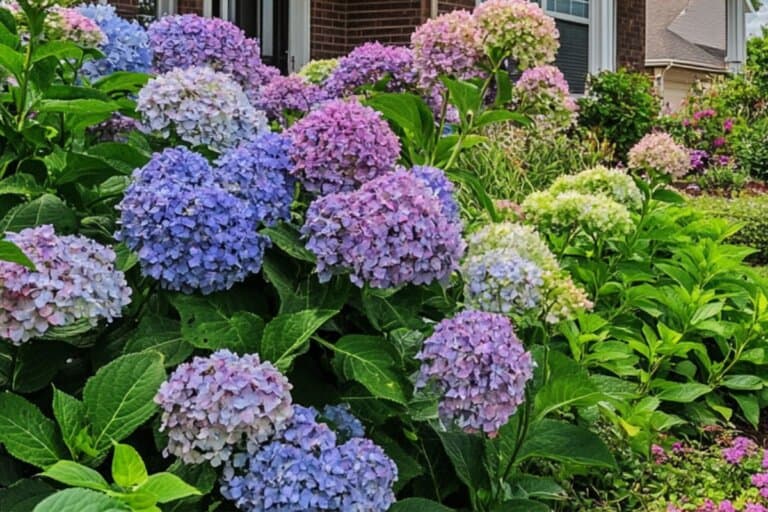
Hydrangeas come in several varieties, and choosing the right one can make all the difference in how your garden grows.
Some, like panicle hydrangeas, thrive in full sun and are great for adding height and structure.
Others such as bigleaf or oakleaf hydrangeas prefer partial shade and offer lush blooms in softer, woodland-style spaces.
If you’re hoping for classic round blooms, mophead and lacecap hydrangeas are popular picks with a range of colors.
Your sunlight, soil type, and available space will help guide your choice.
With the right match, hydrangeas can become one of the most rewarding and eye-catching parts of your landscape!
The Best Spots to Plant Hydrangeas
Hydrangeas are versatile, but they shine brightest when placed with intention.
They need the right balance of light and space to grow well and look their best.
Below are a few classic spots where hydrangeas can thrive while adding structure, color, and charm to your landscape.
Fences and Borders
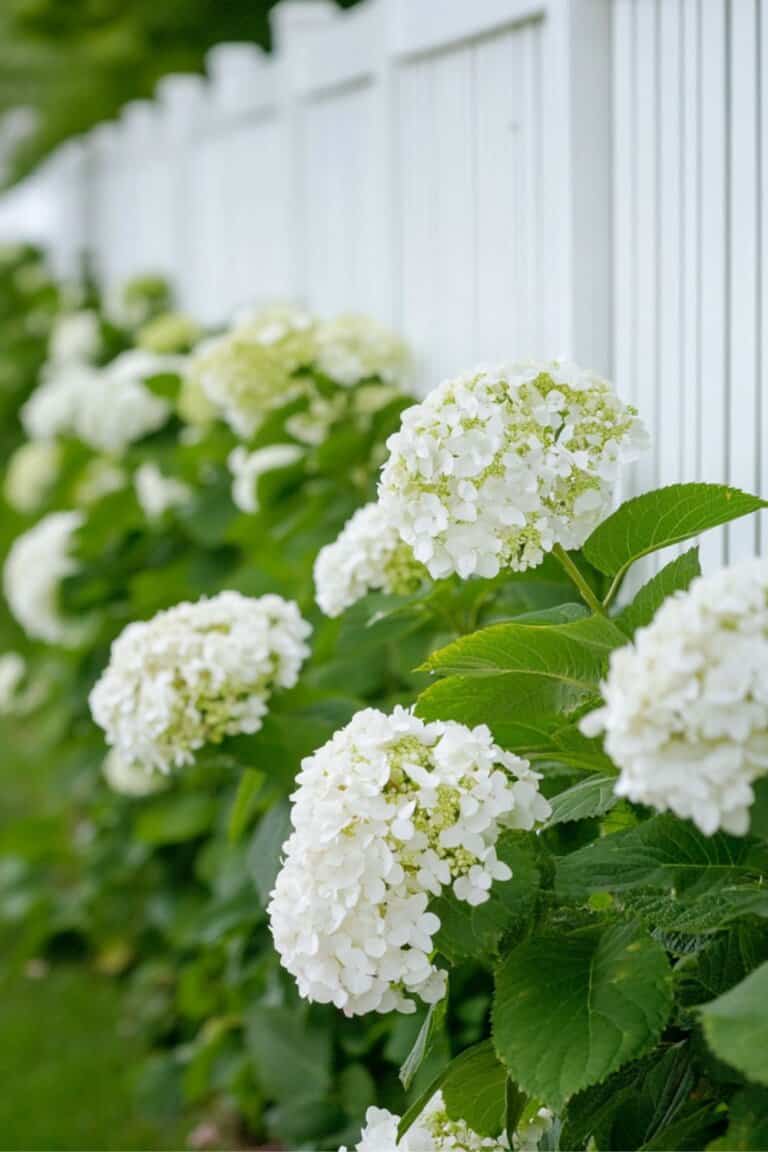
Planting hydrangeas along fences gives them a natural backdrop and helps define the edges of your yard.
Panicle and smooth hydrangeas work well here since they tend to grow upright and can handle more direct sun.
A row of bigleaf hydrangeas can also soften a wooden fence with full, colorful blooms.
Just make sure there’s enough airflow between the plants and the fence to prevent mildew!
Putting mulch at the base helps retain moisture and keeps the area tidy.
Entryways and Walkways
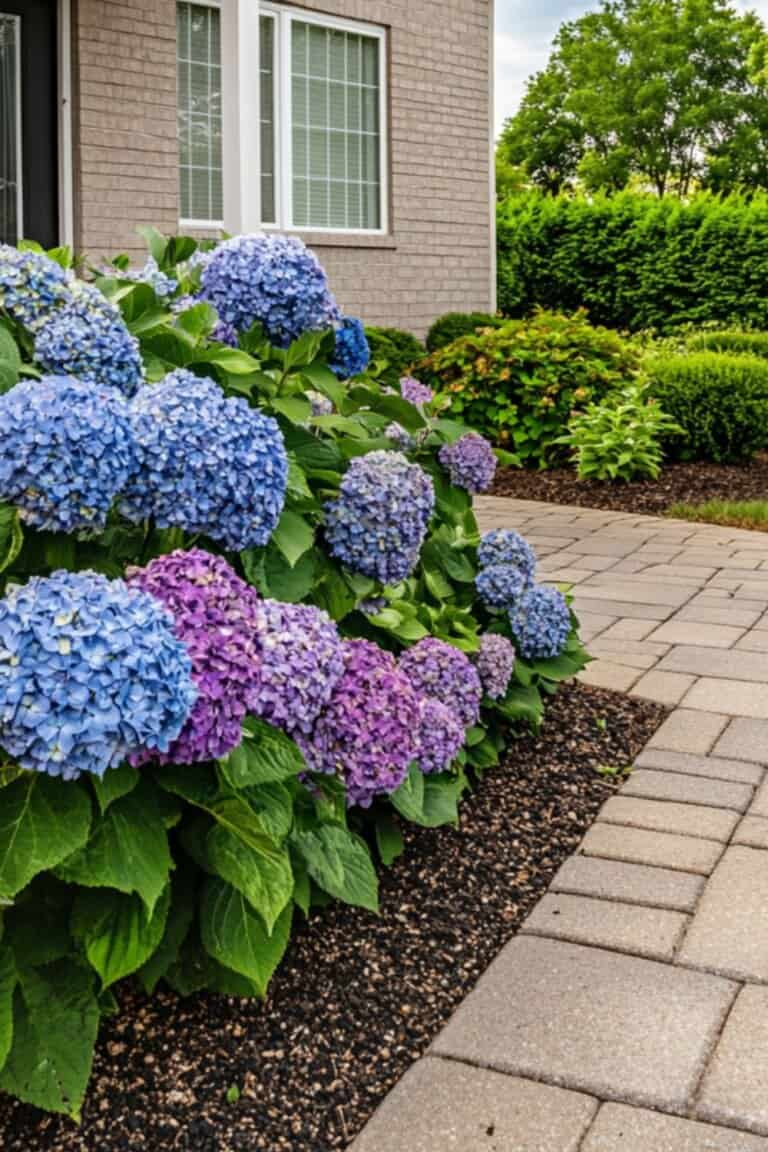
Hydrangeas near a front door or along a path make for a warm, welcoming touch.
Compact varieties like ‘Little Lime’ or ‘Bobo’ are ideal here.
They stay smaller and won’t crowd your steps!
Morning sun and afternoon shade is perfect for these spots, especially in warmer climates.
Just make sure they don’t overgrow your steps so you don’t have to brush past blooms or branches.
For a polished look, pair them with low edging plants or pavers.
Focal Point in Flower Beds
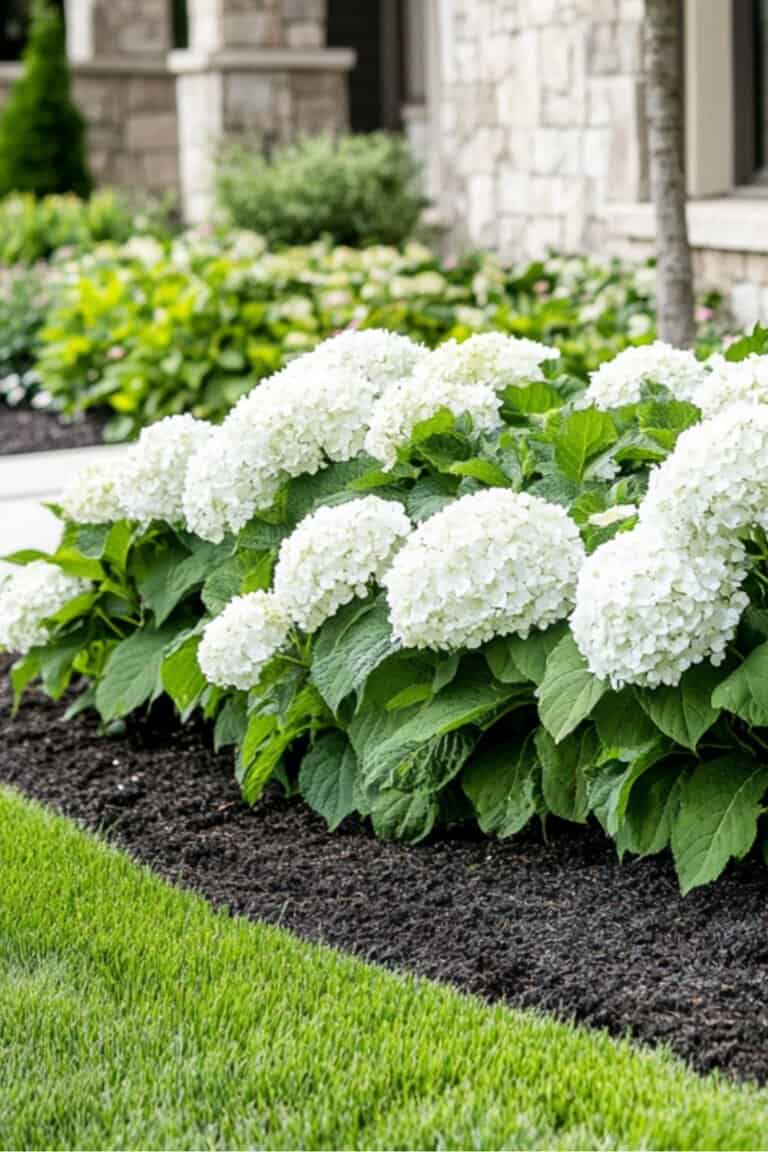
If you’re looking for a centerpiece in your garden, a single hydrangea can anchor the space beautifully.
Bigleaf or oakleaf varieties are especially showy and offer seasonal interest with changing colors and textured leaves.
Choose a slightly elevated spot or plant in a curved bed for a more natural look.
Surround it with lower-growing perennials or ground cover to let it stand out without overwhelming the space.
With the right placement, your hydrangea can carry the entire bed through summer and beyond!
Planting Hydrangeas in Small Spaces
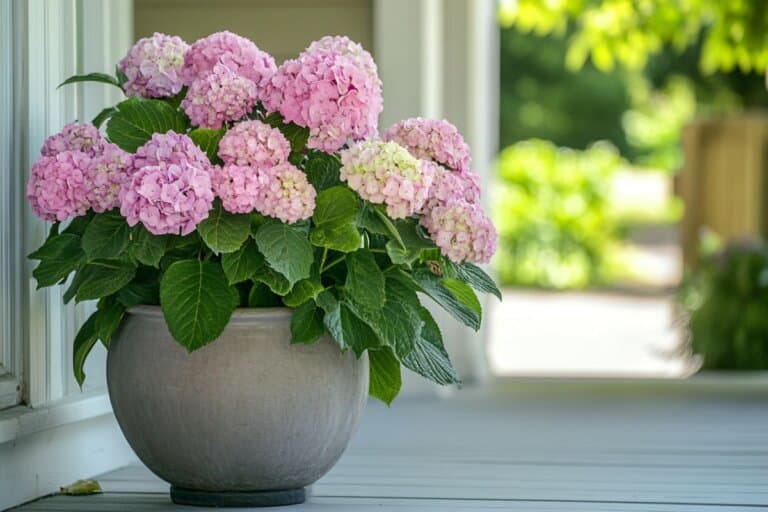
Even if you don’t have a sprawling yard, hydrangeas can still earn a place in your garden.
Compact varieties like ‘Cityline,’ ‘Little Lime,’ or ‘Mini Penny’ are bred for tighter spots and container growth.
A large pot on a balcony, a narrow side yard, or a front porch nook can all become vibrant with the right plant and a bit of care.
Be sure to use well-draining soil, give them enough light (usually morning sun with afternoon shade) and water regularly, especially in containers.
With smart placement and the right variety, even small spaces can enjoy the drama and beauty of hydrangea blooms.
Make Your Hydrangeas Stand Out
Hydrangeas are already eye-catching, but with a little planning, they can become the centerpiece of your entire garden design.
You can pair them with complementary plants and thoughtful arrangements to really up their impact without making your space feel cluttered.
Layer with Greenery
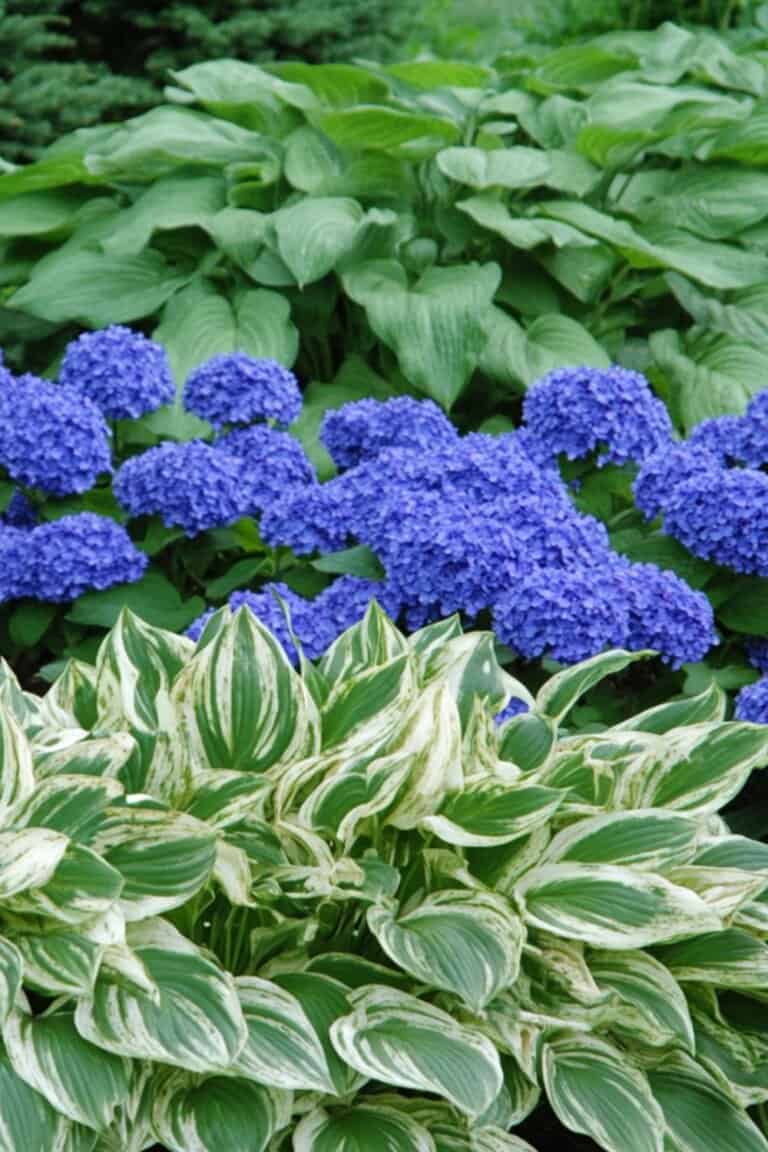
Surrounding your hydrangeas with lush, leafy plants helps frame their blooms and gives your garden a fuller, more cohesive look.
Ferns, hostas, and boxwoods all work well depending on your light and soil conditions.
Try placing lower-growing greenery at the front of your beds and medium-height shrubs just behind the hydrangeas.
This layered effect draws the eye in without overwhelming your plants.
Green foliage also helps hydrangea colors pop, especially blues and pinks.
Mix Heights and Textures
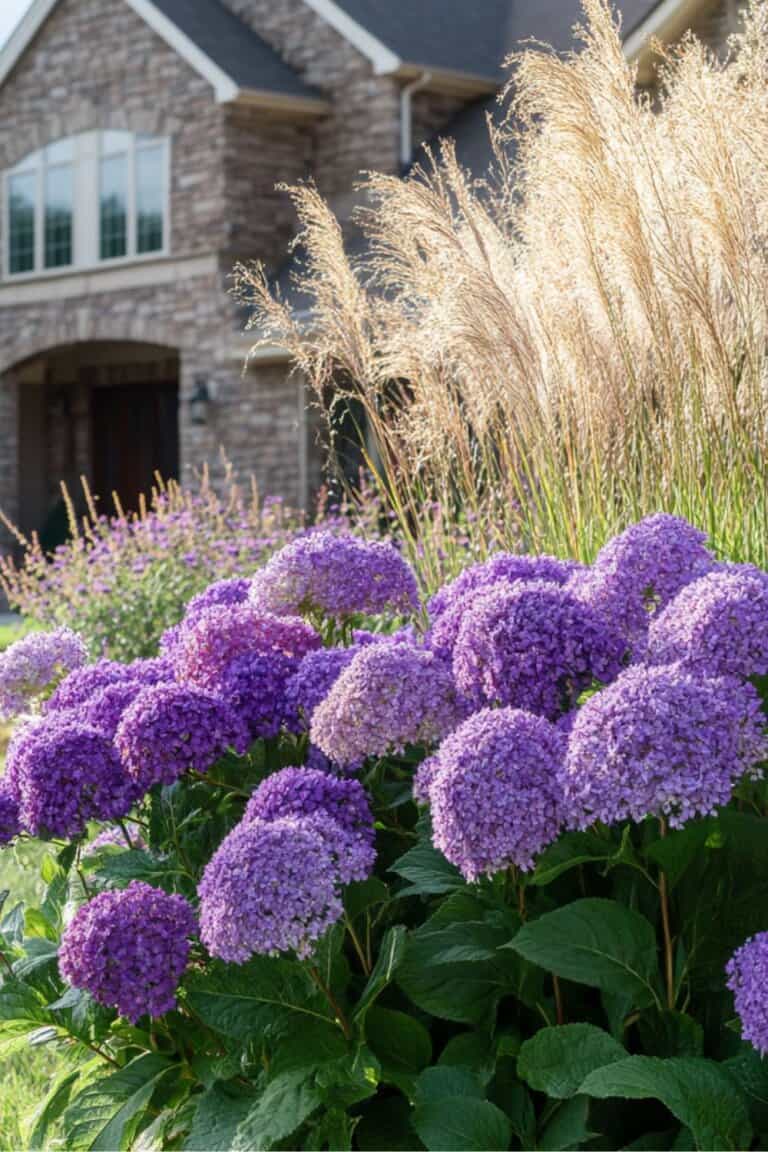
A mix of tall and short plants with different leaf shapes adds depth and keeps your hydrangeas from looking too uniform.
Try pairing tall ornamental grasses or spiky salvia with the round softness of hydrangea blooms.
Smaller flowering plants like catmint or heuchera fill in the gaps and bring contrast without stealing the spotlight.
Just be careful not to overcrowd since hydrangeas still need space to breathe.
Create a Color Story
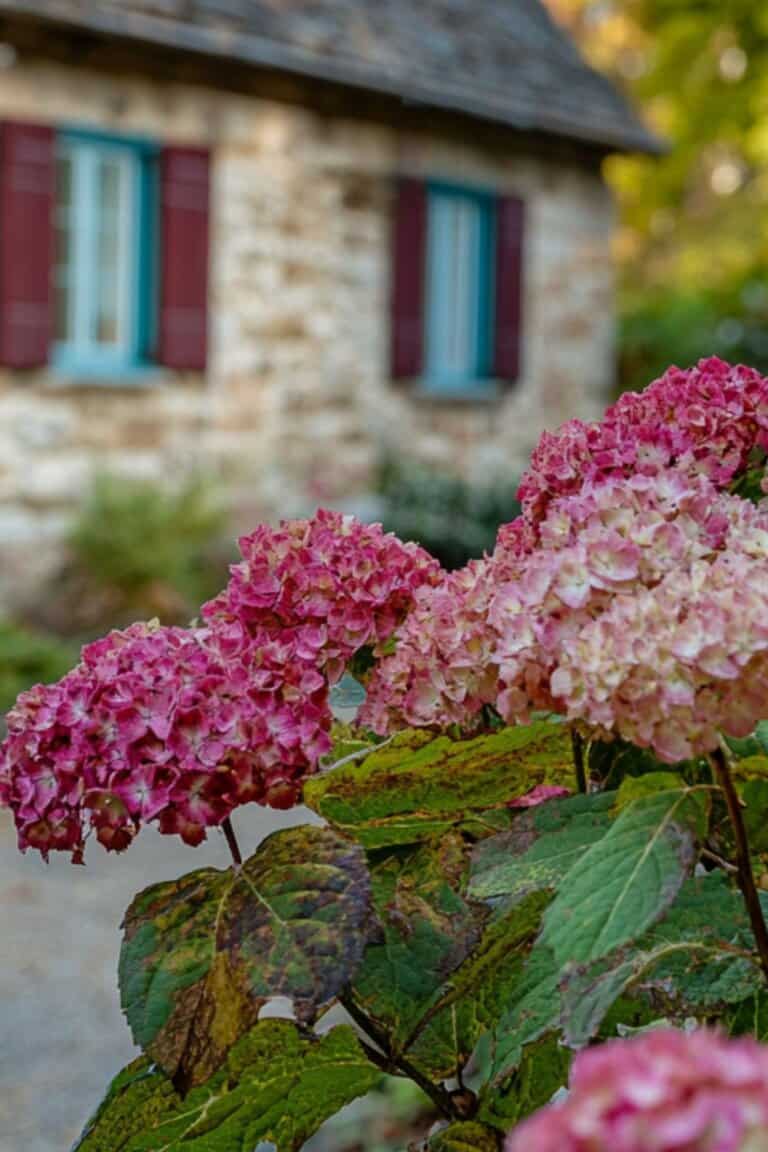
Hydrangeas change color based on soil pH, but you can still guide your garden’s overall palette.
Pair cool-toned hydrangeas with blues, purples, and silvery greens for a calm, cohesive vibe.
Warmer pinks and whites look great with coral, burgundy, or chartreuse accents nearby.
Repeating color families across the garden helps it feel intentional and pulled together.
If you’re planting in containers, you can even control soil conditions to get more predictable shades.
How to Take Care of Hydrangeas
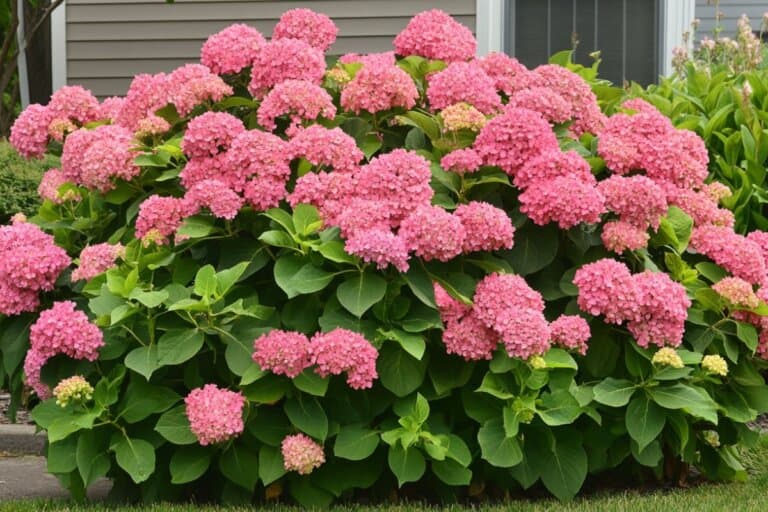
Hydrangeas aren’t high-maintenance, but they do have a few needs if you want full, healthy blooms year after year.
Once you know what they like (light, water, and a bit of attention) they’ll reward you with reliable growth and stunning color!
Here are some ways that you can take care of your hydrangeas:
- Water Regularly: This is important especially during hot or dry spells. Keep the soil consistently moist but not soggy.
- Mulch Around the Base: This helps retain moisture, keeps the roots cool, and prevents weeds from popping up.
- Prune as Needed: This depends on the type of hydrangea. Those that bloom on old wood can be pruned right after they bloom (late summer/early fall) while blooms on new wood can be done in late winter or early spring.
- Feed with Balanced Fertilizer: Give your hydrangeas some fertilizer in early spring and again in the summer if needed.
- Protect from Harsh Afternoon Sun: This really only applies to varieties that prefer part shade.
With the right care routine, hydrangeas can thrive for years, adding color and shape to your garden through every season.
Give them a little attention and they’ll easily become one of the most dependable stars in your landscape!
Let Hydrangeas Bring Your Garden to Life
With their bold blooms and classic charm, hydrangeas can transform any yard, big or small, into something beautiful.
You might be working with a sunny border, a shaded corner, or a cozy front porch and there’s a hydrangea that fits!
Thoughtful placement, a few companion plants, and some basic upkeep are all it takes to let these garden favorites shine.
